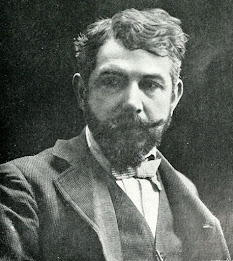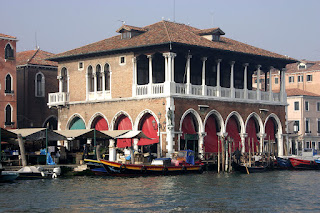Artist who captured life in Venice
The painter Ettore Tito, whose landscapes and scenes from contemporary life in Venice earned him a substantial following in the late 19th and early 20th centuries, was born on this day in 1859 in Castellammare di Stabia, near Naples.Though born in Campania, Tito
was an adopted Venetian
Despite his southern roots, Tito spent most of his life in Venice. His Campanian father captained merchant ships but his mother was Venetian and they moved to Venice when Ettore was still a child.
His prodigious talent for art emerged at an early age. He was taken under the wing of the Dutch artist Cecil van Haanen and was accepted by the Accademia di Belle Arti at the age of 12, graduating at 17 after studying under Pompeo Marino Molmenti, a distinguished professor.
Tito appreciated the beauty of Venice but wanted his paintings to capture the character of the city and its people. He earned the first important recognition of the quality of his work when his 1887 painting Pescheria vecchia a Venezia, a busy scene of traders and customers at the fish market by the Rialto bridge, won great praise at the Esposizione Nazionale Artistica in Venice and was subsequently bought by the Galleria Nazionale d'Arte Moderna in Rome.
He exhibited at the Biennale in Venice every year from in 1895 until 1914 and again in 1920 when the Biennale resumed after World War I. He won the 1897 Premio Città di Venezia and the 1903 Grande Medaglia d'Oro. Several later Biennale exhibitions featured entire rooms devoted to his work.
 |
| Tito made a breakthrough with his 1887 painting of the Rialto fish market, Pescheria vecchia a Venezia |
His success brought prestige and wealth, which enabled the family to own homes in Venice and on the Brenta river, where he had a villa. In Venice, the Palazzo Tito became a meeting place for artists from Europe and the United States. His circle of friends included the American painter John Singer Sargent, the philanthropist collector Isabella Stewart Gardner, European artists such as Anders Zorn, Ludwig Passini and Mariano Fortuny, the composer Ermanno Wolf-Ferrari, the art historian Corrado Ricci and the journalist Luigi Albertini, editor of the Milan daily Corriere della Sera.
In 1894, he was invited to succeed his mentor, Pompeo Molmenti, as the professor of painting at the Accademia di Belle Arti in Venice, a post he held until 1927.
His standing was emphasised in 1929, when at the age of 70 he was asked to produce a painting for the vault of the Chiesa di Santa Maria di Nazareth in Venice to replace the one by Tiepolo destroyed in the First World War.
Tito continued to work well into his seventies. In 1937, his last major work, I maestri veneziani - The Venetian Masters - was shown at the Venice Biennale in 1940. The painting depicts Venice personified as a young woman surrounded by the city's greatest artists, Tiepolo, Veronese, Titian and Tintoretto.
He died in Venice in 1941 at the age of 81. His son, Luigi, inherited his ability as a painter, while his grandson, Pietro Giuseppe, is a noted sculptor.
Travel tip:The medieval castle from which the town of
Castellammare di Stabia takes its name
Castellammare di Stabia, which is still associated with shipyards but was once a thriving resort, was built over the ruins of the ancient Stabiae, a Roman village destroyed in 79 AD by the violent eruption of the Vesuvius volcano, which buried Pompeii and Herculaneum. Some of the ruins are being excavated. The name of the town is said to derive from the medieval castle that overlooks the Gulf of Naples, which can be found alongside the road from Castellammare to Sorrento, Castello a Mare meaning Castle on the Sea. The town was the birthplace of Pliny the Elder, who was a philosopher and author as well as a military commander of the early Roman empire.
Travel tip:Venice's Rialto fish market has been trading
by the Grand Canal since the 14th century
The Rialto fish market can be found near the Rialto Bridge, in the same location it has occupied since the 14th century. The present market structure is a neo-gothic porticoed building built in 1907 following designs by Domenico Rupolo and Cesare Laurenti, whose bronze statue of St Peter faces the Grand Canal. A building close to the market carries an historic plaque indicating the smallest length of various fish allowed for sale, which is still followed today. The rules help preserve fish stocks during the breeding season, ensuring that sufficient fish remain to produce a new supply for the following year.
Also on this day:
546: Rome falls to the Ostrogoths
1538: Pope Paul III excommunicates King Henry VIII of England
1749: The birth of composer Domenico Cimarosa
1894: The birth of First World War pilot Leopoldo Eleuteri
1981: United States Army officer James L Dozier kidnapped by Red Brigades terrorists
















